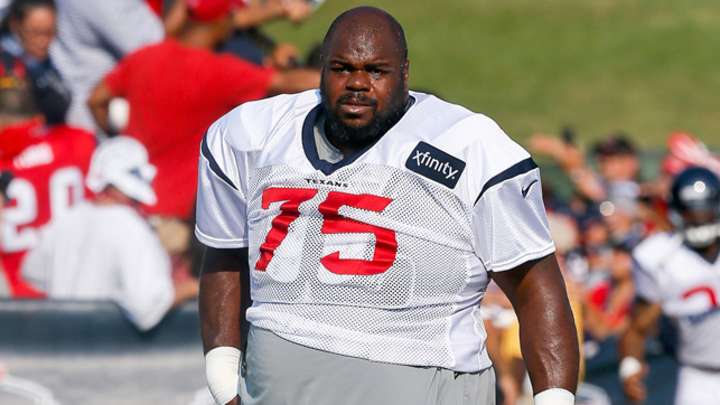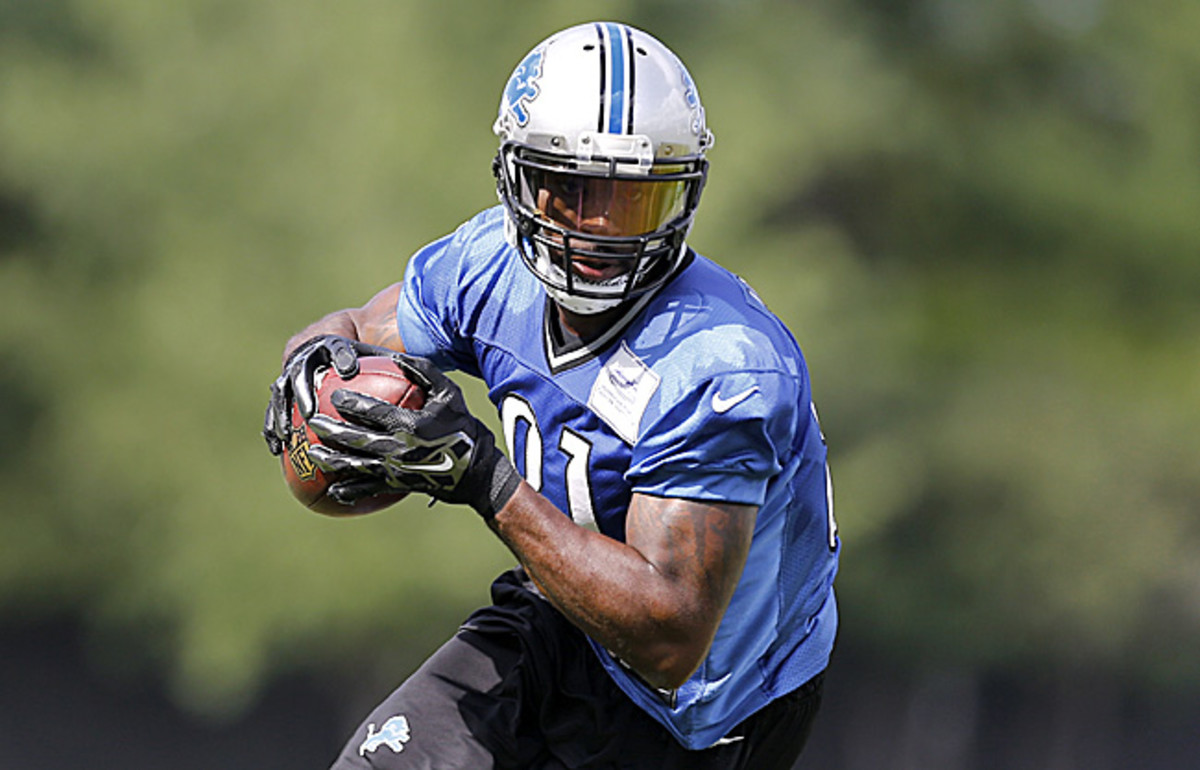Vintage Vince Wilfork in Houston

1. I think Vince Wilfork sent a clear reminder on Saturday that the he still has some of that old nastiness left in the tank. I was at the Texans’ joint practice with Washington in Richmond, and seeing the 33-year-old lumber around during defensive line drills I started to think he was looking his age on the football field. Nope. A few plays into team drills, Wilfork plowed Washington center Josh LeRibeus a good five yards back into the running back. From my vantage point, that play sparked the first of a series of escalating skirmishes that eventually led to the teams being separated and finishing practice on different fields.
2. I think one of the most impressive parts of Frank Gifford’s 13-year career with the New York Giants is that he may have played some of those seasons with a torn ACL. When I did a story last year about the advent of the arthroscope, the instrument that transformed orthopedic surgeries starting in the 70s and 80s, longtime Giants team surgeon Russ Warren used Gifford as an example of how times have changed. Warren examined Gifford years after his playing career ended in 1964 and felt looseness in one of his knees, the telltale sign of an ACL tear. “I thought he had an old ACL injury. Probably played with it,” Warren said. “He played during the 50s, and people really weren’t fixing them back then. He said, ‘Well, I used to just cut differently.’ But ACLs ended a lot of careers, because most guys can’t do that.”
3. I think the most glaring takeaway from visiting Colts camp in Anderson, Ind., was how will there be enough footballs to go around? There are question marks on the roster at offensive and defensive line, but the team has an embarrassment of riches at the skill positions. Consider the number of targets or carries these seven skill players had in 2014: WRs T.Y. Hilton (123 targets), Andre Johnson (141), Donte Moncrief (46) and Philip Dorsett (67 targets at Miami); TEs Coby Fleener (86) and Dwayne Allen (47); and RB Frank Gore (255 rushes plus 15 targets). And that isn’t a full list of all the players who will touch the ball in 2015. It’s a good problem to have, but it will be interesting to see how each player reacts to being just one cog in the offense.
4. I think one of the reasons Tom Coughlin agreed to doing joint practices with the Bengals this year—something he had been opposed to in previous years—was the chance to test his offensive and defensive lines, two areas of the roster that have been problematic. “When you take your offensive and defensive lines, and you are able to put those together with a very, very good team that has been in the playoffs four out of (the last) five years, and a good front,” Coughlin said before training camp, “that experience in itself is valuable in terms of what we will come away from it with. Because we have so many new parts and young parts; guys we are depending on to be the difference-makers.”
5. I think the new rule giving injury spotters upstairs the ability to stop play on the field if they see a player in need of medical attention is an important step toward a safer game, but I also wonder how soon we’ll see a team trying to take advantage of a free way to stop the game. If a medical timeout is called, a team is not charged and the game and play clocks are frozen while the player is taken off the field and replaced by a substitute. The new rule specifies that any deliberate attempt by a team to improperly take advantage of a stoppage in play would be considered an unfair act and subject to “appropriate discipline.” But it wouldn’t be the first time we’ve seen a coach instructing a player to fake an injury.
6. I think the New York Times’ Juliet Macur captured my thoughts exactly on the Buccaneers’ new RED “women’s movement” initiative to “change the way football is enjoyed by women,” with gameday style tips and other so-called lifestyle interests. I look forward to a day when gender equality is mainstream enough that there are just football fans. Not “male football fans” or “female football fans.” Just football fans.
7. I think more kickers should use Matt Prater’s tactic of practicing with arena league goalposts, which are more than half as narrow as NFL regulation goalposts (9 feet across, instead of 18.5). Prater brought the goalposts to Detroit this offseason, believing they help him hone his accuracy.

8. I think it’s always fascinating to see up close the minutiae that make players like WR Calvin Johnson great. Sometimes you think a player like Johnson is so ridiculously physically gifted that the game comes easily to him. But even as he enters his ninth NFL season, he was spending time discussing (with QB Matt Stafford and his position coach) the leverage he should have played against the middle linebacker on a single training-camp practice rep.
9. I think the rush to judgment on rookies playing in their first preseason game (see: Trae Waynes and Bud Dupree) is unfair. One NFL coach who also played in the league once described playing in his first professional game as running across the freeway in heavy traffic. So much is happening so quickly that you can’t remember where you are supposed to go. And how many practices have they had in the pros so far? Maybe 15? That doesn’t give much time for rookies to be coached up on technique and how to play certain situations.
10. I think one of the most troubling realities of Amelia Rayno’s courageous account of being sexually harassed by (now former) Minnesota athletic director Norwood Teague is that women often have a lack of options for recourse in situations like this. Rayno eloquently illuminated the conundrum many women find themselves in, fearing that taking action against inappropriate behavior would be career suicide. And in many cases, it would be career suicide. Just look at the options included in the action plan her employer gave her for responding to Teague’s unwanted sexual advances: One of them was to be switched off her prestigious beat. The truth is that women in this business experience harassment of varying kinds far more than you might expect, and that in most cases, the most prudent career option is to try to keep doing your job without raising a stink. I hope Rayno sharing her story can be a step toward a paradigm shift in our business, and our society.
